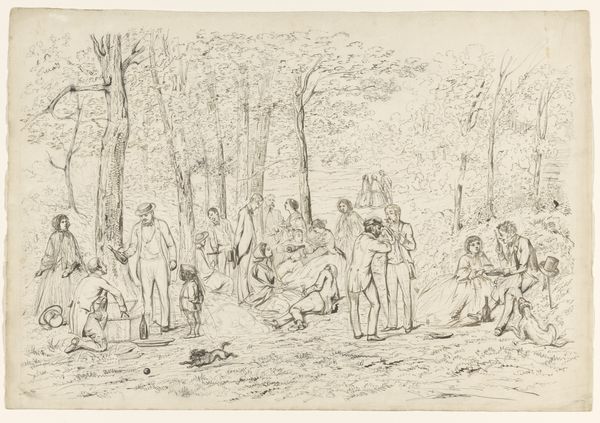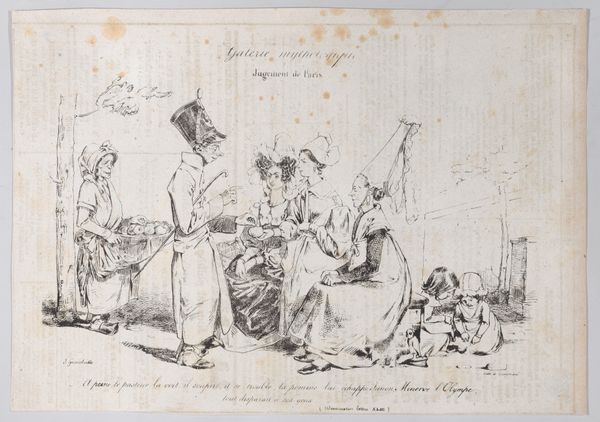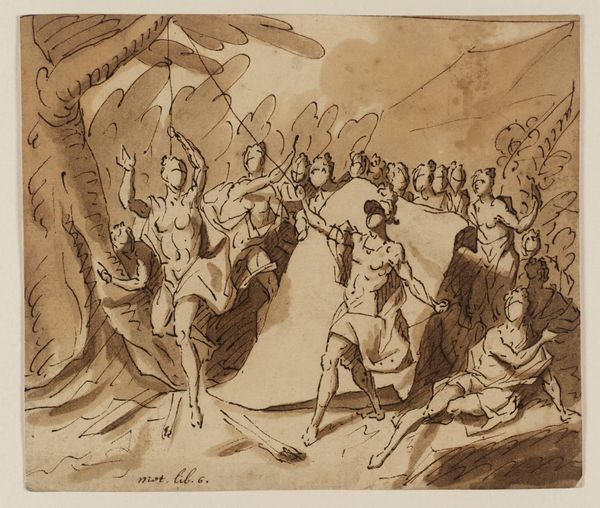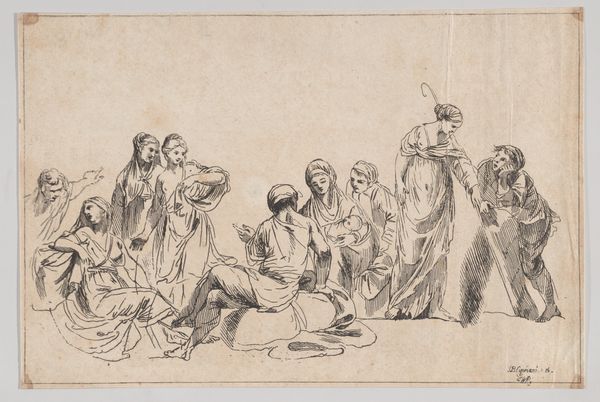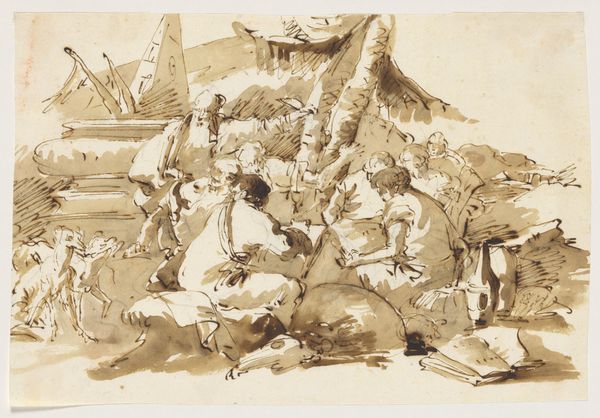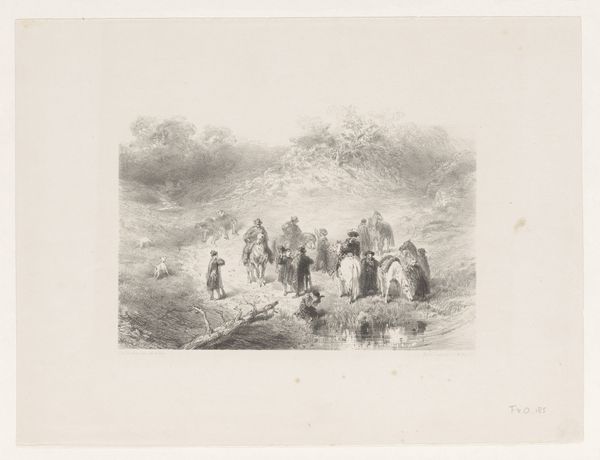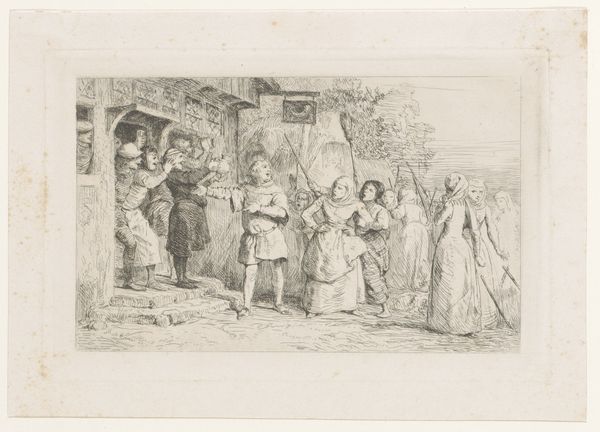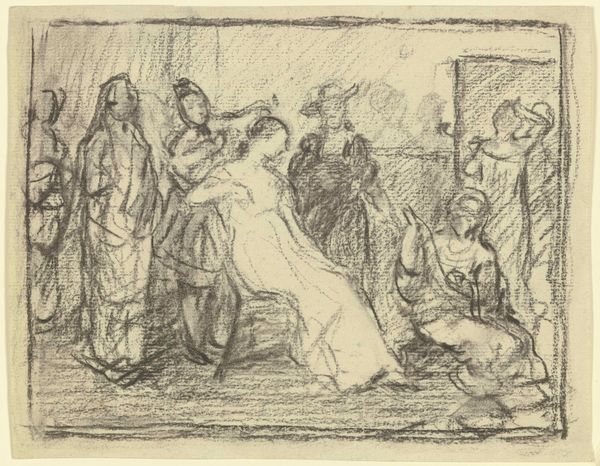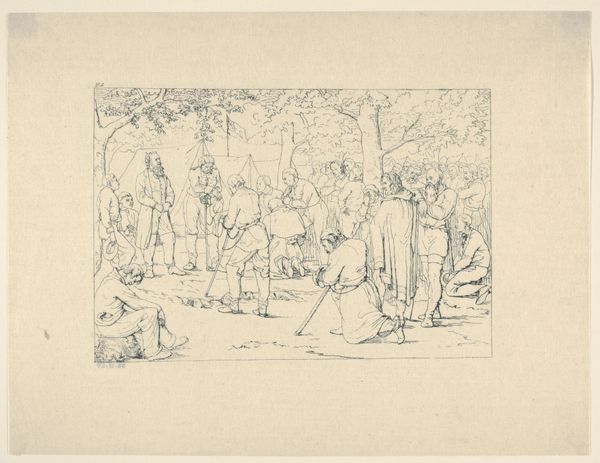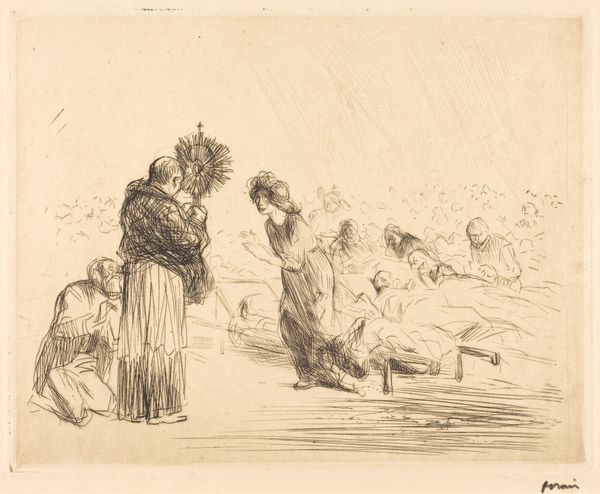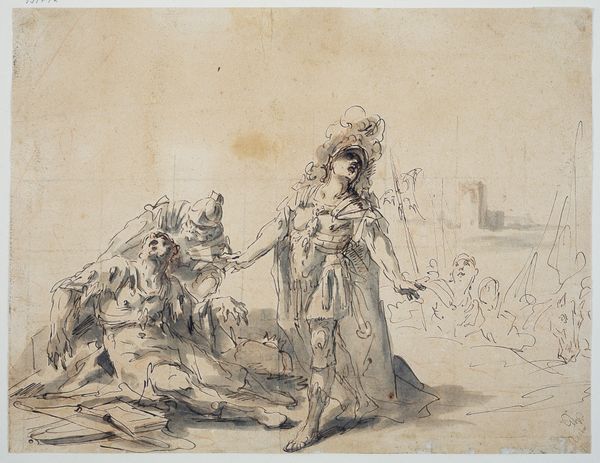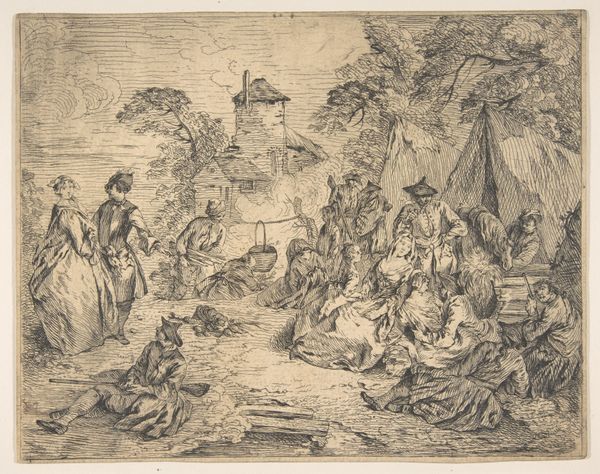
lithograph, print, watercolor
#
lithograph
# print
#
caricature
#
figuration
#
watercolor
#
romanticism
#
genre-painting
#
watercolor
Dimensions: 259 mm (height) x 337 mm (width) (bladmaal)
Curator: This delightful watercolor lithograph is entitled "Pierrot et sa famille." Its creation is attributed to Christian Holm sometime between 1803 and 1846, and it currently resides at the Statens Museum for Kunst. Editor: My immediate impression is a chaotic, almost grotesque tableau. The figures, though presented as a family, appear disjointed and rather…unhinged. There’s a nervous energy about it. Curator: Indeed. The image draws heavily on the archetype of Pierrot, the lovelorn clown, but subverts his traditional melancholy with a rather bawdy, almost burlesque depiction of domesticity. Observe the tall hat and the exaggerated expressions – Holm uses these markers to highlight both Pierrot’s pathos and his absurdity. He becomes a symbol of societal misfits. Editor: I'm struck by the composition. The loose application of the watercolor and lithographic line creates a sense of instability. Note how the figures are arranged—almost tumbling out of the frame, the light and shadow further heighten the dramatic effect. This deliberate imbalance emphasizes the topsy-turvy nature of the scene. The pale wash accentuates line to imply shape, giving the artwork structure in a delicate way. Curator: Precisely. The symbolism is rather rich if we think of Pierrot's historical and cultural trajectory. Originally a figure of longing and unrequited love within the Commedia dell'arte, Holm's version presents us with a distorted, almost perverse take on family life. What does it say about the societal anxieties of his time? It might even be read as social critique using visual tropes already laden with history and cultural weight. Editor: From a formal perspective, consider the palette; the limited range of colors— predominantly whites and pale blues, with the exception of the wine bottle’s browns — heightens the starkness of the figures. The economy of the media is striking in creating expressive forms. The artist relies on shape, not texture, to depict tone and shadow. Curator: The longevity of Pierrot as a symbol, from the stage to visual art, demonstrates his enduring relevance. This caricature by Holm highlights how a recognizable cultural symbol continues to transform and reflect societal conditions over time. Editor: Looking at this lithograph, one certainly gets the sense that form really does follow function: a fractured aesthetic represents, with clarity, a fractured family.
Comments
No comments
Be the first to comment and join the conversation on the ultimate creative platform.
